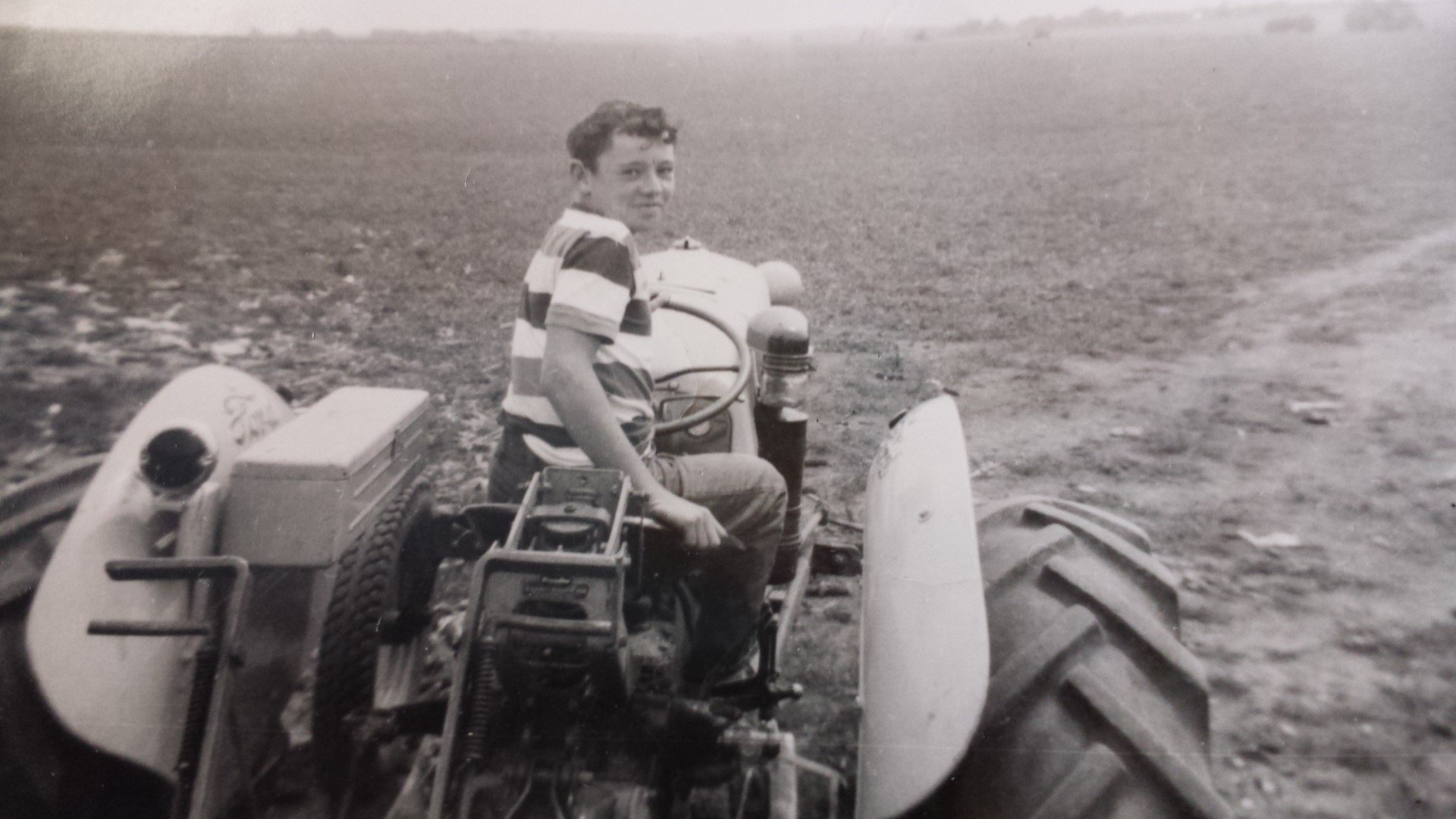Numismatics 101
Where do I begin?
Above, Walt on a tractor, around 10 years old, in Iowa, where he would spend summers on his grandparent’s farm, and where he fell in love with looking for great coins! Even if it was a Buffalo Nickel.
There are endless ways to begin collecting coins, but let’s begin with two choices. Ultimately, whichever you choose, you’ll end up investigating the other option, too.
Option 1 | Research and Learn
There are some amazing resources out there from some very old, very reputable sources.
First up, we suggest taking a look at Money.org, the American Numismatic Association’s website (ANA). Specifically, take a look at their events page, which includes online classes about numismatics. We would highly recommend these.
Decide if you’d like to join a club or if you’d like to go on your own. If you’d like a club, the ANA also has lists of clubs, as you might expect from an organization founded in 1891.
Second, you’ll need to begin to judge how good a coin is. Take a look at this resources for grading coins, from PCGS. It’s also useful to look at this blog on coin grading.
Most coins you will collect—and here we will focus on Walt’s favorites, Early American Copper—have someone who wrote a definitive article or book about the coins. In the field of Early American Large cents, that man was Dr. Sheldon, and his book, Penny Whimsy is pretty much required reading. We’re linking you to a free PDF on Internet Archive, where you can literally read a copy of the book and turn its pages, virtually.
Above, Walt’s very favorite coin, the “Crying Lady.” Look closely at the “tears” on her face. Are these imperfections that ruin the coin, or do they add character? What do you think?
Option 2 | Begin with Beauty
If you hop over to our pages on coins, you’ll see many examples of the “same” coin. In some cases, it’s clear that one coin might be “better” than another—it would be in better condition and more could be seen—but often it’s a question of what you like better.
We on the LCF team have been lucky enough to hold some of those coins and put them on the kitchen counter under bright light trying to decide which we preferred. Sometimes the color of the coin is slightly different. Sometimes, there are “flaws” that make the coin exceptional.
If you choose this path, you can chart your evolution as a collector with a notebook, jotting down what makes a coin beautiful to you.
At some point, in this approach, you’ll need to learn about classification systems for the coins, which will take you over to option 1.
We also suggest using Notion if you want to keep track of the coins you like and make a virtual collection, organizing your coins by what you like best.



